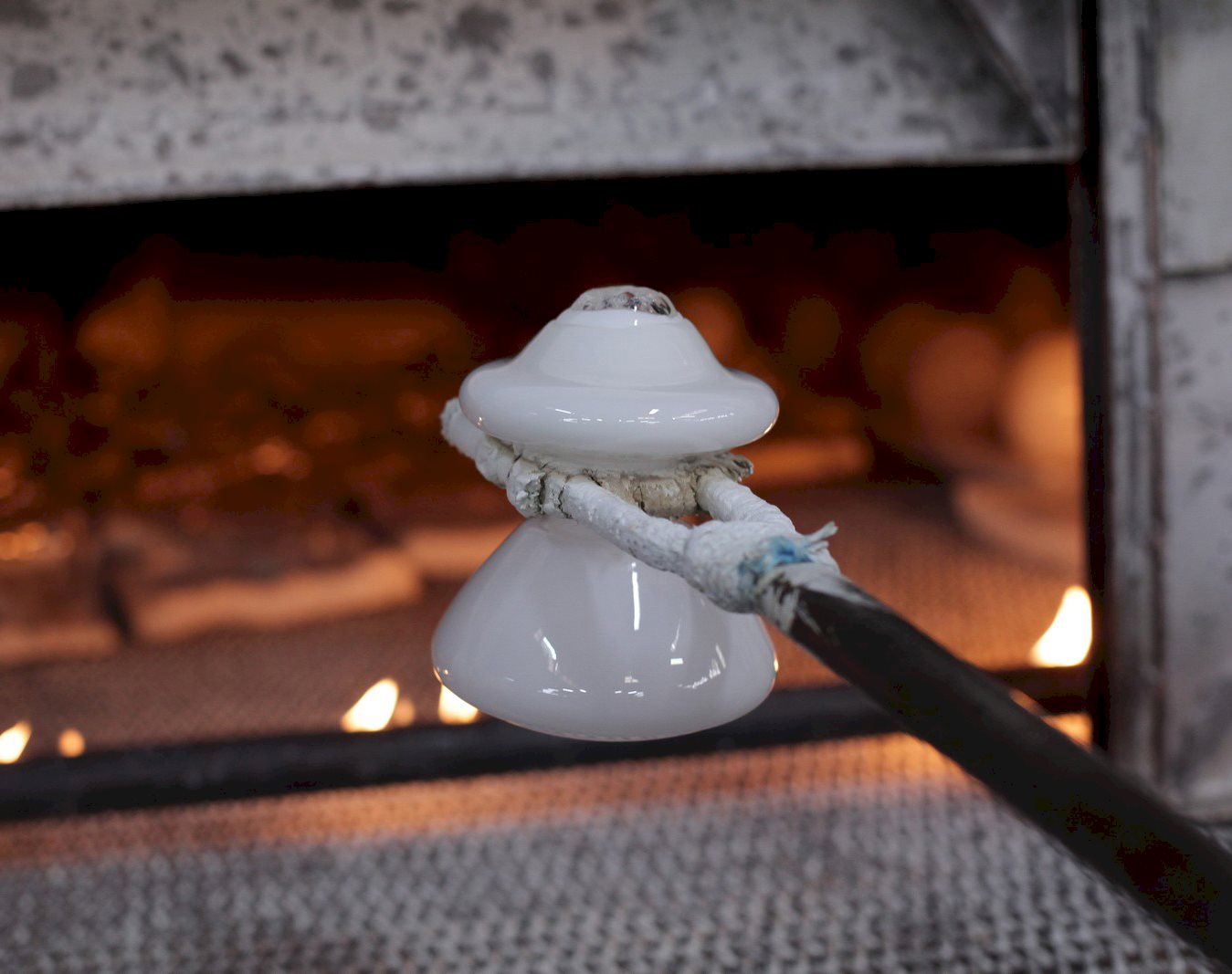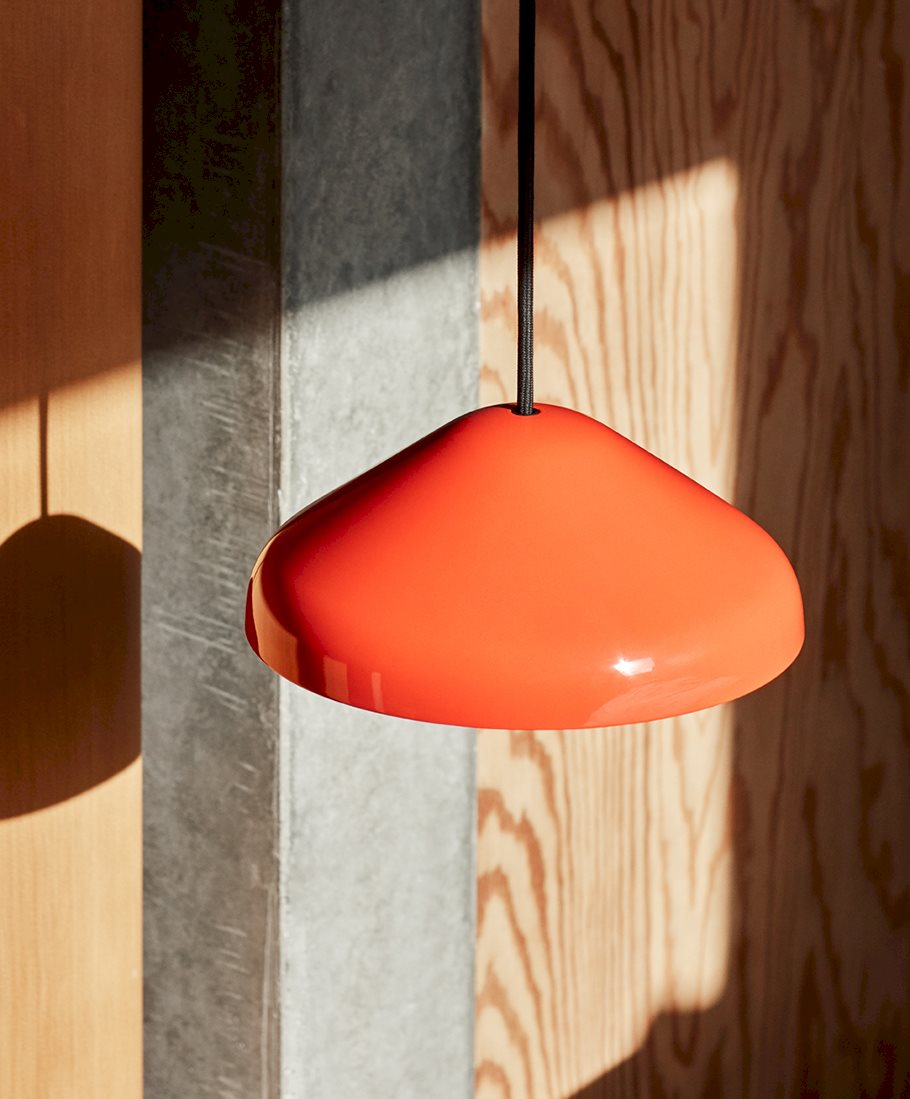Pao Collection by Naoto Fukasawa – Glass Pendant and Glass Table Lamp
Named after the soft, glowing shape of traditional Mongolian Pao tents illuminated at night, Pao pendants and table lamps embody that same atmospheric warmth. Fukasawa has developed a method for concealing the mechanism inside Pao’s shade, while utilizing advanced LED-lighting technology to optimise the efficiency and possibilities of the light source. By keeping the aesthetic modest and simple, he brings the design into harmony with its environment, reinforcing his primary intention of making the atmosphere pleasant and comfortable.

What inspired your design of Pao?
Naoto Fukasawa: Pao is a traditional style of a tent in Mongolia, nomadic people use the Pao to move different locations to live. It never stays in one place, but at night, the Pao lights up and the whole tent itself is illuminated like a soft lantern, with a soft, glowing shape. I was inspired by the Pao tent, and I imagined creating a lamp with the same inviting, very warm feeling. So I can tell you my personal history, because my first trip to Afghanistan to stay in a PAO tent, as the cottage of a quite nice hotel. And people sleeping on the ground with carpet, iconic, traditional lifestyle. Maybe I have a strong impression of this when I was young, and therefore I am always designing many of the lamps already, but I focus on what is iconic, friendly, warm, traditional lamp. And the shade shape is so important to invent making a new lamp, which is already friendly. SO lucky I found this shape, which is not only a shape but also creates light just like a PAO.
How did the form, aesthetics, etc., develop?
Naoto Fukasawa: Nowadays, technology, particularly the LED, allows us to design any kind of lamp, and people are more focused on the light itself, what we call the “architecture of light.” What is important is more than just designing the lamp itself. As HAY is located in Denmark, where they still maintain some elements of a warm, traditional lifestyle combined with a high-technology culture, I wanted this light to fit in with that combination. However, a high-efficiency, LED light bulb looks pretty mechanical and ugly, so I wanted to hide the mechanism inside the shade, by the diffuser. So, Pao is making us happy like warm light, and that is a powerful symbol, because these three things are strongly connected: light and lamp and home. The sound, “PAO”, is also very friendly.

Pao Glass Table Lamp in progress.
You often use the word “familiar” and “friendly” when you describe your design?
Naoto Fukasawa: I believe people already share many things, but they don’t know it. The shape of the lamp, or the Pao, is an icon which already exists in your mind, but sometimes you have to tell people: you know this, it’s familiar to you. To bring out this commonality in human existence, things and symbols we already share. This is so important to my way of designing things, because I try to share again, and to embody reality in a form, things that people have in their hidden mind that we already share.
How do you balance simplicity and comfort in design?
Naoto Fukasawa: People are as nature. I’m not so much focused on local cultures, I focus more on the human. So in Japan, they really care about being harmonized with nature, and the human being as one of nature’s beings. And someone who wants to express too much “I am a man,” it’s not so beautiful, it’s not so much in harmony with nature. So being humble is the meaning of being in harmony with the environment. I believe that design should almost be made to hide, to be invisible, but also to make your life’s atmosphere more pleasant. So I try to make iconic things that should be at the same time, invisible. It is challenging.

Pao Pendant in progress.
Does Pao reflect your design practice more generally?
Naoto Fukasawa: The traditional design of lamps more supports the normal person’s mind. Design should not be too much, advance too much, too high tech. But who knows, either the light as the traditional bulb or the LED. So most people don’t know what’s the difference? That’s our responsibility. Technology should not be shown off and express too much that “I am a new technology,” it’s not necessary. But we have to use new technology, for the light, for example, so people don’t have to change the bulb so often. If you’re careful to see with a professional eye, they can see, this is a high technology light, but if someone who doesn’t care sees a nice lamp.

Pao Pendant in progress.
About Naoto Fukasawa
Born in Yamanashi Prefecture in 1956, Naoto Fukasawa established NAOTO FUKASAWA DESIGN in 2003. His designs are known for their ability to access and communicate the true essence of an object. Currently, he designs for a wide range of leading brands worldwide, as well as consulting and designing for local Japanese companies; He also sits on the design advisory board of Muji, and is the art director of Maruni.
His designs span a wide variety of fields, from precision electronic equipment to furniture and interior spaces. Fukasawa is the curator of The Japan Folk Crafts Museum, professor in the Integrated Design Department at Tama Art University, and one of the directors of 21_21 Design Sight. He has been accorded the title of Royal Designer for Industry (Royal Society of Arts), and has been a recipient of the Isamu Noguchi Award. For HAY, he has designed Pao.

















